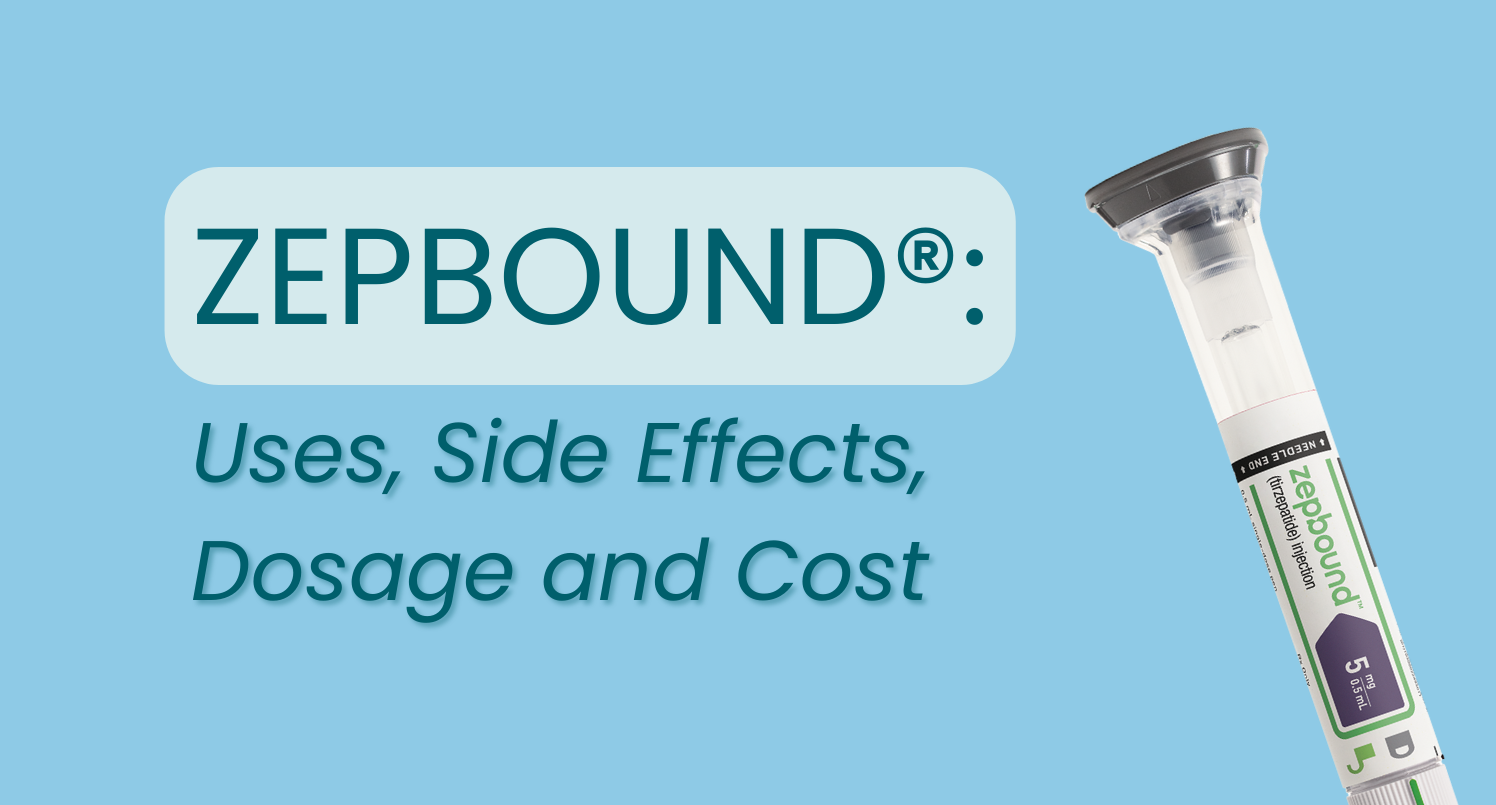What You Need To Know About Zepbound
A quick look at the newest FDA approved weight loss drug

Zepbound®, the brand name of tirzepatide in the dosage for weight management, is becoming very popular, and chances are, you’ve heard of it. Zepbound has revolutionized the weight loss industry based on the magnitude of weight loss success. We will talk about all the things you need to know about Zepbound in case you are considering taking it yourself.
What is Zepbound?
Zepbound is the brand name of tirzepatide, manufactured by Eli Lilly, that is approved by the FDA for weight management. Tirzepatide is a dual agonist, working on two main pathways. Not only is it a GLP-1 receptor agonist (like semaglutide) but it is also a glucose-dependent insulinotropic polypeptide (GIP) receptor agonist.
How does Zepbound work?
Zepbound is a dual agonist: meaning it contains both a GLP-1 receptor agonist and a GIP receptor agonist.
GLP-1 is a naturally occurring hormone that works to lower blood glucose, slow gastric emptying, increase fullness, reduce appetite, and lead to decreased overall calorie intake.
GIP is another neuroendocrine hormone made in the intestines. It too is involved in regulating blood sugar levels, insulin secretion, and appetite reduction.
By targeting both the GIP and GLP-1 receptors, tirzepatide delivers not only a clinically significant improvement in blood glucose but also notable weight loss.
How is it administered?
Tirzepatide is given as a weekly subcutaneous injection. Tirzepatide dosing for type 2 diabetes and obesity is the same.
Treatment begins with 2.5 mg weekly for 4 weeks
The dosage can be increased to 5 mg once weekly if well tolerated
If further dosage increases are needed to achieve the desired results, tirzepatide can be increased by 2.5 mg weekly every 4 weeks to a maximum dose of 15 mg per week
What is Zepbound prescribed for?
Zepbound is prescribed for weight management in obesity. To qualify, patients should have a BMI ≥ 30 kg/m2. Because of its additional benefits in reducing the risk of cardiovascular disease and helping control blood sugar, Zepbound provides multiple advantages in patients with obesity and type 2 diabetes mellitus.
What is the difference between Mounjaro® and Zepbound?
Zepbound is the brand name of tirzepatide that is approved for weight management. Mounjaro is the brand name of tirzepatide approved to treat type 2 diabetes. The dosing recommendations are similar for both medications.
However, patients taking Zepbound should aim to reach 15 mg weekly for maximum effects, whereas patients taking Mounjaro may be able to continue at a maintenance dose as low as 5 mg weekly, depending on their blood sugar levels. For additional blood glucose reduction, Mounjaro can also be given as high as 15 mg weekly.
For a deeper dive into how the different GLP-1s for weight loss compare, check out our blog “How Do The Different GLP-1s Compare?
How effective is Zepbound for weight loss?
Zepbound has been shown to be very effective for weight loss. Within a randomized controlled trial, at the recommended maintenance dosage of 15 mg, Zepbound demonstrated a 20.9% weight reduction over 3.1% in patients taking no medication. This is higher than the weight loss seen with semaglutide (Wegovy®), likely related to the dual action on both the GIP and GLP-1 receptors.
What side effects could I experience with Zepbound?
Many different adverse effects can occur with Zepbound, some of which are mild, while others are potentially more severe.
Gastrointestinal upset is the most frequently experienced side effect. Nausea and vomiting are the most common; diarrhea and constipation also occur. In some cases, these are severe enough to make patients stop treatment.
Decreased appetite is expected and necessary to achieve the desired effects. This usually results in a lower calorie intake, which supports the overall goals of improved blood glucose and weight loss.
Injection site reactions can occur, seen as redness, pain, and swelling at the injection site. This usually resolves within 1-2 days.
There is a theoretical but rare risk of pancreatitis.
Hypoglycemia occurs fairly frequently, more so if Zepbound is taken in conjunction with other medications that lower blood glucose, like insulin, thiazolidinediones, or sulfonylureas.
Acute kidney injury is rare but can occur, especially in patients with chronic kidney disease.
Acute cholecystitis (gallstones causing inflammation and obstruction) can be a result of quick weight loss and reduced gallbladder emptying.
There is also an increased risk of medullary thyroid carcinoma, a rare condition with inheritable risk.
Interested in learning more about GLP-1s for weight loss?
If you are considering medication for weight loss and are interested in a GLP-1 receptor agonist, the clinicians at Agile Telehealth can help decide if medication may be right for you. You can see if you qualify here!
Disclaimer: The content provided in our blogs is for informational purposes only and is not intended as medical advice. Readers should consult their primary care physician for guidance on treatment options and personalized medical advice.


